Central Pacific Railroad
 | |
| Locale | Sacramento, CA-Ogden, Utah |
|---|---|
| Dates of operation | June 28, 1861–April 1, 1885, but continued as an SP leased line until 30 June 1959 |
| Successor | Southern Pacific |
| Track gauge | 1,435 mm (4 ft 8 1⁄2 in) → 1 |
| Headquarters | Sacramento, CA; San Francisco, CA |

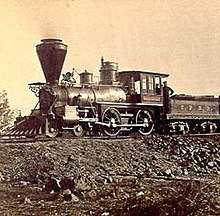
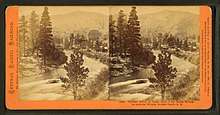
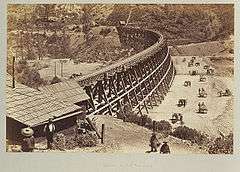

The Central Pacific Railroad (CPRR) was a rail route between California and Utah built eastwards from the West Coast in the 1860s, to complete the western part of the "First Transcontinental Railroad" in North America. It later became part of the Union Pacific Railroad.
Many 19th century national proposals to build a transcontinental railroad failed because of the energy consumed by political disputes over slavery. With the secession of the South, the modernizers in the Republican Party controlled the US Congress. They passed legislation authorizing the railroad, with financing in the form of government railroad bonds. These were all eventually repaid with interest.[2] The government and the railroads both shared in the increased value of the land grants, which the railroads developed.[3] The construction of the railroad also secured for the government the economical "safe and speedy transportation of the mails, troops, munitions of war, and public stores."[4]
Authorization and construction
Planned by Theodore Judah, the Central Pacific Railroad was authorized by Congress in 1862. It was financed and built through "The Big Four" (who called themselves "The Associates"): Sacramento, California businessmen Leland Stanford, Collis Huntington, Charles Crocker, and Mark Hopkins. Crocker was in charge of construction. Construction crews comprised 12,000 Chinese emigrant workers by 1868, when they constituted eighty percent of the entire work force.[5][6] They laid the first rails in 1863. The "Golden spike", connecting the western railroad to the Union Pacific Railroad at Promontory, Utah, was hammered on May 10, 1869.[7] Coast-to-coast train travel in eight days became possible, replacing months-long sea voyages and lengthy, hazardous travel by wagon trains.
In 1885 the Central Pacific Railroad was leased by the Southern Pacific Company. Technically the CPRR remained a corporate entity until 1959, when it was formally merged into Southern Pacific. (It was reorganized in 1899 as the Central Pacific "Railway".) The original right-of-way is now controlled by the Union Pacific, which bought Southern Pacific in 1996.
The Union Pacific-Central Pacific (Southern Pacific) mainline followed the historic Overland Route from Omaha, Nebraska to San Francisco Bay.
Chinese labor was the most vital source for constructing the railroad. Fifty Chinese laborers were hired by the Central Pacific Railroad in February 1865, and soon more and more Chinese men were hired. Working conditions were harsh, and Chinese men were compensated less than their white counterparts. Chinese men were paid thirty-one dollars each month, and while white workers were paid the same, they were also given room and board.[8]
Financing
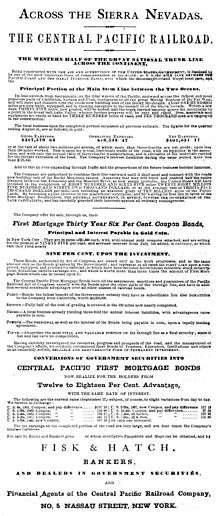
Construction of the road was financed primarily by 30-year, 6% U.S. government bonds authorized by Sec. 5 of the Pacific Railroad Act of 1862. They were issued at the rate of $16,000 per mile of tracked grade completed west of the designated base of the Sierra Nevada range near Roseville, CA where California state geologist Josiah Whitney had determined were the geologic start of the Sierras' foothills.[9] Sec. 11 of the Act also provided that the issuance of bonds "shall be treble the number per mile" (to $48,000) for tracked grade completed over and within the two mountain ranges (but limited to a total of 300 miles (480 km) at this rate), and "doubled" (to $32,000) per mile of completed grade laid between the two mountain ranges.[10] The U.S. Government Bonds, which constituted a lien upon the railroads and all their fixtures, were repaid in full (and with interest) by the company as and when they became due.
Sec. 10 of the 1864 amending Pacific Railroad Act (13 Statutes at Large, 356) additionally authorized the company to issue its own "First Mortgage Bonds"[11] in total amounts up to (but not exceeding) that of the bonds issued by the United States. Such company-issued securities had priority over the original Government Bonds.[12] (Local and state governments also aided the financing, although the City and County of San Francisco did not do so willingly. This materially slowed early construction efforts.) Sec. 3 of the 1862 Act granted the railroads 10 square miles (26 km2) of public land for every mile laid, except where railroads ran through cities and crossed rivers. This grant was apportioned in 5 sections on alternating sides of the railroad, with each section measuring 0.2 miles (320 m) by 10 miles (16 km).[13] These grants were later doubled to 20 square miles (52 km2) per mile of grade by the 1864 Act.
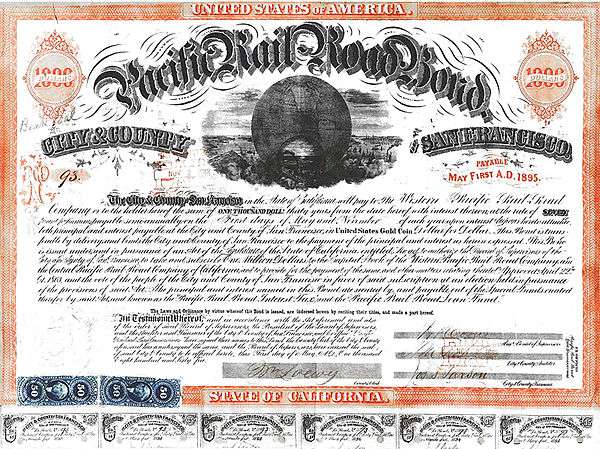
Although the Pacific Railroad eventually benefited the Bay Area, the City and County of San Francisco obstructed financing it during the early years of 1863-1865. When Stanford was Governor of California, the Legislature passed on April 22, 1863, "An Act to Authorize the Board of Supervisors of the City and County of San Francisco to take and subscribe One Million Dollars to the Capital Stock of the Western Pacific Rail Road Company and the Central Pacific Rail Road Company of California and to provide for the payment of the same and other matters relating thereto" (which was later amended by Section Five of the "Compromise Act" of April 4, 1864). On May 19, 1863, the electors of the City and County of San Francisco passed this bond by a vote of 6,329 to 3,116, in a highly controversial Special Election.
The City and County's financing of the investment through the issuance and delivery of Bonds was delayed for two years, when Mayor Henry P. Coon, and the County Clerk, Wilhelm Loewy, each refused to countersign the Bonds. It took legal actions to force them to do so: in 1864 the Supreme Court of the State of California ordered them under Writs of Mandamus (The People of the State of California ex rel the Central Pacific Railroad Company vs. Henry P. Coon, Mayor; Henry M. Hale, Auditor; and Joseph S. Paxson, Treasurer, of the City and County of San Francisco. 25 Cal. 635) and in 1865, a legal judgment against Loewy (The People ex rel The Central Pacific Railroad Company of California vs. The Board of Supervisors of the City and County of San Francisco, and Wilhelm Lowey, Clerk 27 Cal. 655) directing that the Bonds be countersigned and delivered. In 1863 the legislature's forcing of City and County action became known as the "Dutch Flat Swindle". Critics claimed the CPRR intended to build a railroad only as far as Dutch Flat, to connect to the Dutch Flat Wagon Road which they already controlled.
Museums and archives
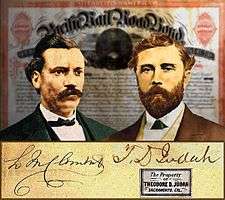
A replica of the Sacramento, California Central Pacific Railroad passenger station is part of the California State Railroad Museum, located in the Old Sacramento State Historic Park.
Nearly all the company's early correspondence is preserved at Syracuse University, as part of the Collis Huntington Papers collection. It has been released on microfilm (133 reels). The following libraries have the microfilm: University of Arizona at Tucson; and Virginia Commonwealth University at Richmond. Additional collections of manuscript letters are held at Stanford University and the Mariners' Museum at Newport News, Virginia. Alfred A. Hart was the official photographer of the CPRR construction.
Locomotives

The Central Pacific's first three locomotives were of the then common 4-4-0 type, although with the American Civil War raging in the east, they had difficulty acquiring engines from eastern builders, who at times only had smaller 4-2-4 or 4-2-2 types available. Until the completion of the Transcontinental rail link and the railroad's opening of its own shops, all locomotives had to be purchased by builders in the northeastern U.S. The engines had to be dismantled, loaded on a ship, which would embark on a four-month journey that went around South America's Cape Horn until arriving in Sacramento where the locomotives would be unloaded, re-assembled, and placed in service.
Locomotives at the time came from many manufacturers, such as Cooke, Schenectady, Mason, Rogers, Danforth, Norris, Booth, and McKay & Aldus, among others. The railroad had been on rather unfriendly terms with the Baldwin Locomotive Works, one of the more well-known firms. It is not clear as to the cause of this dispute, though some attribute it to the builder insisting on cash payment (though this has yet to be verified). Consequently, the railroad refused to buy engines from Baldwin, and three former Western Pacific Railroad (which the CP had absorbed in 1870) engines were the only Baldwin engines owned by the Central Pacific. The Central Pacific's dispute with Baldwin remained unresolved until well after the road had been acquired by the Southern Pacific.
In the 1870s, the road opened up its own locomotive construction facilities in Sacramento. Central Pacific's 173 was rebuilt by these shops and served as the basis for CP's engine construction. The locomotives built before the 1870s were given names as well as numbers. By the 1870s, it was decided to eliminate the names and as each engine was sent to the shops for service, their names would be removed. However, one engine that was built in the 1880s did receive a name: the El Gobernador.
Construction of the rails was often dangerous work. Towards the end of construction, almost all workers were Chinese immigrants. The ethnicity of workers depended largely on the "gang" of workers/specific area on the rails they were working.
Preserved locomotives
The following CP engines have been preserved:
- Central Pacific 1, Gov. Stanford
- CP 233, a 2-6-2T the railroad had built, is stored at the California State Railroad Museum.
- Central Pacific 3, C. P. Huntington
- Former Western Pacific Mariposa, Central Pacific's second number 31. Was sold to Stockton Terminal and Eastern in 1914 and renumbered 1. Currently at the Travel Town Museum in Los Angeles.
- Virginia and Truckee Railroad, though The Dayton was not built for, nor served on the Central Pacific, the engine was one of two locomotives built by the CP's Sacramento shops in preservation (the other being CP 233). Moreover, its specifications were derived from CP 173, and thus is the only surviving example of that engine's design.
- Central Pacific's numbers 60, Jupiter, and 63 Leviathan. Although both engines have been scrapped, and therefore technically do not count as having been preserved, there were exact, full size operating replicas built in recent years. The Jupiter was built for the National Park Service along with a replica of Union Pacific's 119 for use at their Golden Spike National Historic Site. Leviathan was finished in 2009, is privately owned, and travels to various railroads to operate.
Timeline
1861
- June 28, 1861: "Central Pacific Rail Road of California" incorporated; name changed to "Central Pacific Railroad of California" on October 8, 1864, after the Pacific Railway Act amendment passes that summer.[15]
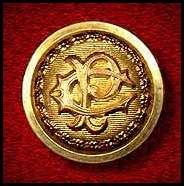
1862
- July 1, 1862: President Lincoln signs the Pacific Railway Act, which authorized the Central Pacific and the Union Pacific to build a railroad to the Pacific Ocean.[16]
1863
- January 8, 1863: Ground-breaking ceremonies take place at Sacramento, California, at the foot of "K" Street at the waterfront of the Sacramento River.[17]
- October 26, 1863: First rail laid at Sacramento.
1864
- April 26, 1864: Central Pacific opened to Roseville, 18 miles (29 km), where it makes a junction with the California Central Railroad, operating from Folsom north to Lincoln.
- June 3, 1864: The first revenue train on the Central Pacific operates between Sacramento and Newcastle, California
- October 8, 1864: Following passage of the amendment to the Pacific Railroad Act, the company's name is changed to "Central Pacific Railroad of California," a new corporation.
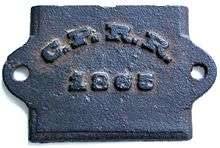
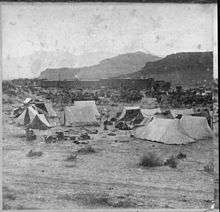

1865
- May 13, 1865: Central Pacific opened 36 miles (58 km) to Auburn, California.
- September 1, 1865: Central Pacific opened 54 miles (87 km) to Colfax, California (formerly known as "Illinoistown.")
1866
- December 3, 1866: Central Pacific opened 92 miles (148 km) to Cisco, California.
1867
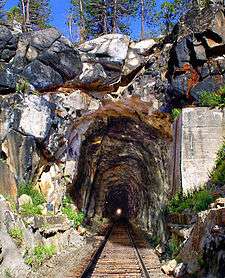
- August 28, 1867: The Sierra Nevadas were finally "conquered" by the Central Pacific Railroad, after almost five years of sustained construction effort, with the successful completion at Donner Pass of its 1,659-foot (506 m) Tunnel #6 (a.k.a. the "Summit Tunnel").[18]
- December 1, 1867: Central Pacific opened to Summit of the Sierra Nevada, 105 miles (169 km).
1868
- June 18, 1868: The first passenger train crosses the Sierra Nevada to Lake's Crossing (modern day Reno, Nevada) at the eastern foot of the Sierra in Nevada Territory.
1869
- April 28, 1869: Track crews on the Central Pacific lay 10 miles (16 km) of track in one day. This is the longest stretch of track that has been built in one day to date.
- May 10, 1869: The Central Pacific and Union Pacific tracks meet in Promontory, Utah.
- May 15, 1869: The first transcontinental trains are run over the new line to Sacramento.
- November 8, 1869: Central Pacific subsidiaries Western Pacific Railroad (1862-1870) and San Francisco Bay Railroad complete the final leg of the route, connecting Sacramento to Oakland.
1870
- June 23, 1870: Central Pacific is consolidated with the Western Pacific Railroad (1862-1870) and San Francisco Bay Railroad Co. to form the "Central Pacific Railroad Co." (of June 1870).
- August 22, 1870: Central Pacific Railroad Co. is consolidated with the California & Oregon; San Francisco, Oakland & Alameda; and San Joaquin Valley Railroad; to form the "Central Pacific Railroad Co.", a new corporation.
1876
- April 30, 1876: Operates the California Pacific Railroad between South Vallejo and Sacramento, Calistoga and Marysville until April 1, 1885 (see below).
1877
- July 16, 1877: Start of the Great Railroad Strike of 1877 when railroad workers on strike in Martinsburg, West Virginia, derail and loot a train; United States President Rutherford B. Hayes calls in Federal troops to break the strike.
1883
- November 18, 1883: A system of one-hour standard time zones for American railroads was first implemented. The zones were named Intercolonial, Eastern, Central, Mountain, and Pacific. Within one year, 85% of all cities having populations over 10,000, about 200 cities, were using standard time.
1885
- April 1, 1885: Central Pacific is leased to Southern Pacific.
1888
- June 30, 1888: Listed by ICC as a "non-operating" subsidiary of Southern Pacific.
1899
- July 29, 1899: Central Pacific is reorganized as the "Central Pacific Railway".
1959
- June 30, 1959: Central Pacific is formally merged into the Southern Pacific.
Acquisitions
- Stockton and Copperopolis Railroad[19]
- Stockton and Visalia Railroad[20]
- Western Pacific Railroad (1862-1870)
See also
- Rail transport in California
- Donner Pass (Sierra Nevada)
References
- ↑ "A Brief History of Verdi". Verdihistory.org. Retrieved 2014-01-17.
- ↑ Daggett, Stuart (1908). "Union Pacific". Railroad Reorganization (PDF). 4. Harvard University Press. p. 256. Retrieved 13 December 2011.
- ↑ Leo Sheep Co. v. United States, 440 U.S. 668 (1979).
- ↑ CPRR.org (2009-09-24). "Pacific Railroad Act of 1862, §2". Cprr.org. Retrieved 2014-01-17.
- ↑ Workers of the Central Pacific Railroad, PBS: The American Experience.
- ↑ George Kraus, "Chinese Laborers and the Construction of the Central Pacific," Utah Historical Quarterly, vol. 37, no. 1 (Winter 1969), pp. 41-57.
- ↑ "Ceremony at "Wedding of the Rails," May 10, 1869 at Promontory Point, Utah". World Digital Library. 1869-05-10. Retrieved 2013-07-20.
- ↑ Takaki, Ronald (1989). A History of Asian Americans: Strangers From A Different Shore (Second ed.). New York, NY: Little, Brown and Company. p. 84-86. ISBN 978-0-316-83130-7.
- ↑ CPRR.org (2009-09-24). "Pacific Railroad Act of 1862 §5". Cprr.org. Retrieved 2014-01-17.
- ↑ CPRR.org (2009-09-24). "Pacific Railroad Act of 1862 §11". Cprr.org. Retrieved 2014-01-17.
- ↑ CPRR.org. "FIRST MORTGAGE BONDS OF THE CENTRAL PACIFIC RAILROAD, Business Prospects and Operations of the Company, 1867". Cprr.org. Retrieved 2014-01-17.
- ↑ CPRR.org (2009-09-24). "Pacific Railroad Act of 1864 §10". Cprr.org. Retrieved 2014-01-17.
- ↑ CPRR.org (2009-09-24). "Pacific Railroad Act of 1862 §3". Cprr.org. Retrieved 2014-01-17.
- ↑ "Lewis Metzler Clement, Central Pacific Railroad Pioneer". cprr.org. Retrieved 7 April 2018.
- ↑ By-Laws of the Central Pacific Railroad Company of California, Incorporated: June 28, 1861 "THE INDUSTRIAL AND FINANCIAL RESOURCES OF THE UNITED STATES OF AMERICA, as developed by the official returns of the Northern and Southern States and Territories, with an APPENDIX containing a detailed description of Federal, State, and City securities, railroad and canal bonds and shares, bank shares, etc. from statements nearest Jan. 1, 1863, and the CHARTERS OF THE UNION PACIFIC RAILROADS, the GENERAL RAILROAD LAW OF CALIFORNIA, and the BY-LAWS OF THE CENTRAL PACIFIC RAILROAD CO. OF CALIFORNIA." New York: SAMUEL HALLETT, Banker and Railroad Negotiator. 1864
- ↑ "An Act to aid in the construction of a railroad and telegraph line from the Missouri river to the Pacific ocean, and to secure to the government the use of the same for postal, military, and other purposes 12 Stat. 489, July 1, 1862
- ↑ Ambrose, Stephen E. (2000). Nothing Like It in the World. New York: Simon & Schuster. p. 106. ISBN 0-7432-0317-8.
- ↑ Cooper, Bruce C. CPRR Summit Tunnel (#6), Tunnels #7 & #8, Snowsheds, "Chinese" Walls, Donner Trail, and Dutch Flat Donner - Lake Wagon Road at Donner Pass CPRR.org.
- ↑ "Tinkham Chapter XVIII". Usgennet.org. Retrieved 2012-05-15.
- ↑ "Happy Birthday". Oakdalehistory.net. 2002-10-09. Retrieved 2012-05-15.
Further reading
- Ambrose, Stephen E. (2000). Nothing Like It In The World: The Men Who Built the Transcontinental Railroad, 1863-1869. New York: Simon & Schuster. ISBN 0-684-84609-8.
- Bain, David Haward (1999). Empire Express: Building the First Transcontinental Railroad. New York: Viking. ISBN 0-670-80889-X.
- Beebe, Lucius (1963). The Central Pacific and Southern Pacific Railroads. Berkeley, CA: Howell-North Books.
- Cooper, Bruce C. (2005). Riding the Transcontinental Rails: Overland Travel on the Pacific Railroad 1865-1881. Philadelphia: Polyglot Press. ISBN 1-4115-9993-4.
- Cooper, Bruce Clement (2010). The Classic Western American Railroad Routes. New York: Chartwell Books/Worth Press. ISBN 0-7858-2573-8.
- Daggett, Stuart (1922). Chapters on the History of the Southern Pacific. New York: The Ronald Press.
- Evans, Cerinda W. (1954). Collis Potter Huntington (2 vols.). Newport News, Va.: Mariners' Museum.
- Fleisig, Heywood (1975). "The Central Pacific Railroad and the Railroad Land Grant Controversy". Journal of Economic History. 35 (3): 552–566. doi:10.1017/s002205070007563x. Questions whether promoters of the Central Pacific Railroad were oversubsidized. Confirms the traditional view that subsidies were not an economic necessity because they "influenced neither the decision to invest in the railroad nor the speed of its construction." Notes that estimates of rate of return for the railroad developers using government funds range from 71% to 200%, while estimates of private rates of return range from 15% to 25%.
- Galloway, John Debo (1950). The First Transcontinental Railroad: Central Pacific, Union Pacific. New York: Simmons-Boardman.
- Goldbaum, Howard, and Wendell Huffman (2012). Waiting for the Cars: Alfred A. Hart's Stereoscopic Views of the Central Pacific Railroad, 1863-1869. Carson City: Nevada State Railroad Museum.
- Griswold, Wesley (1962). A Work of Giants: Building the First Trans-continental Railroad. New York: McGraw-Hill.
- Klein, Maury (1987). Union Pacific (3 vols.). Garden City, NY: Doubleday. ISBN 0-385-17728-3.
- Kraus, George (1969). High Road to Promontory: Building the Central Pacific (Now the Southern Pacific) across the High Sierra. Palo Alto: American West Pub. Co.
- Kraus, George (1975). "Chinese Laborers and the Construction of the Central Pacific". Utah Historical Quarterly. 37 (1): 41–57. Shows how Chinese railroad workers lived and worked, and managed the finances associated with their employment. Concludes that CPRR officials who employed the Chinese, even those at first opposed to the policy, came to appreciate the reliability of this group of laborers. There are many quotations from accounts by contemporary observers.
- Lake, Holly (1994). "Construction of the CPRR: Chinese Immigrant Contribution". Northeastern Nevada Historical Society Quarterly. 94 (4): 188–199.
- Mercer, Lloyd J. (1970). "Rates of Return for Land-grant Railroads: the Central Pacific System". Journal of Economic History. 30 (3): 602–626. Analyzes the impact of land grants from 1864 to 1890 on rates of return from investment in the Central Pacific Railroad. Results suggest that even without land grants, rates of return were high enough to induce investment. Also, land grants did not pay for the construction of the railroad. Land grants, however, did produce large social returns in western states by accelerating construction of the system.
- Mercer, Lloyd J. (1969). "Land Grants to American Railroads: Social Cost or Social Benefit?". Business History Review. 43 (2): 134–151. doi:10.2307/3112269. Uses econometrics to determine the value of railroad land grants of the 19th century to the railroads and to society. The author summarizes and criticizes previous treatments of this subject, and discusses his own findings. Using the Central Pacific and the Union Pacific systems as the basis for his investigation, the author concludes that the railroad owners received unaided rates of return that substantially exceeded the private rate of return on the average alternative project in the economy during the same period. Thus, the projects were profitable, although contemporary observers expected that the roads would be privately unprofitable without the land grant aid. The land grants did not have a major effect, increasing the private rate of return only slightly. Nevertheless, he says the policy of subsidizing those railroad systems was beneficial for society since the social rate of return from the project was substantial and exceeded the private rate by a significant margin.
- Ong, Paul M. (1985). "The Central Pacific Railroad and Exploitation of Chinese Labor". Journal of Ethnic Studies. 13 (2): 119–124. Ong tries to resolve the apparent inconsistency in the literature on Asians in early California, with contradictory studies showing evidence both for and against the exploitation of Chinese labor by the CPRR, using monopsony theory as developed by Joan Robinson. Because CPRR set different wages for whites and Chinese (each group had different elasticities of supply) and used the two classes in different types of positions, the two groups were complementary, rather than interchangeable. Calculations thus show higher levels of exploitation of the Chinese than found in previous studies.
- Saxton, Alexander (1966). "The Army of Canton in the High Sierra". Pacific Historical Review. 35 (2): 141–151. doi:10.2307/3636678.
- Tutorow, Norman E. (1970). "Stanford's Responses to Competition: Rhetoric Versus Reality". Southern California Quarterly. 52 (3): 231–247. doi:10.2307/41170298. Leland Stanford and the men who ran the CPRR paid lip-service to the idea of free competition, but in practice sought to dominate competing railroad and shipping lines. Analyzing the period 1869-1893, the author shows how Stanford and his associates repeatedly entered into pooling arrangements to prevent competition, bought out competitors, or forced rivals to agree not to compete. He concludes that Stanford and his partners viewed laissez-faire as applicable only to government controls, and not to businessmen's destruction of competition within the system.
- White, Richard (2003). "Information, Markets, and Corruption: Transcontinental Railroads in the Gilded Age". The Journal of American History. 90 (1).
- Williams, John Hoyt (1988). A Great and Shining Road: The Epic Story of the Transcontinental Railroad. New York: Times Books. ISBN 0-8129-1668-9.
- Neil Goodwin, Peace River Films (1990). "The Iron Road". The American Experience. PBS.
- Best, Gerald M (1969). Iron Horses to Promontory. New York: Golden West.
External links
| Wikimedia Commons has media related to Central Pacific Railroad. |
- Central Pacific Railroad Photographic History Museum
- Railroads in California, handwritten report by L. M. Clement. Special Collections and Archives, The UC Irvine Libraries, Irvine, California.